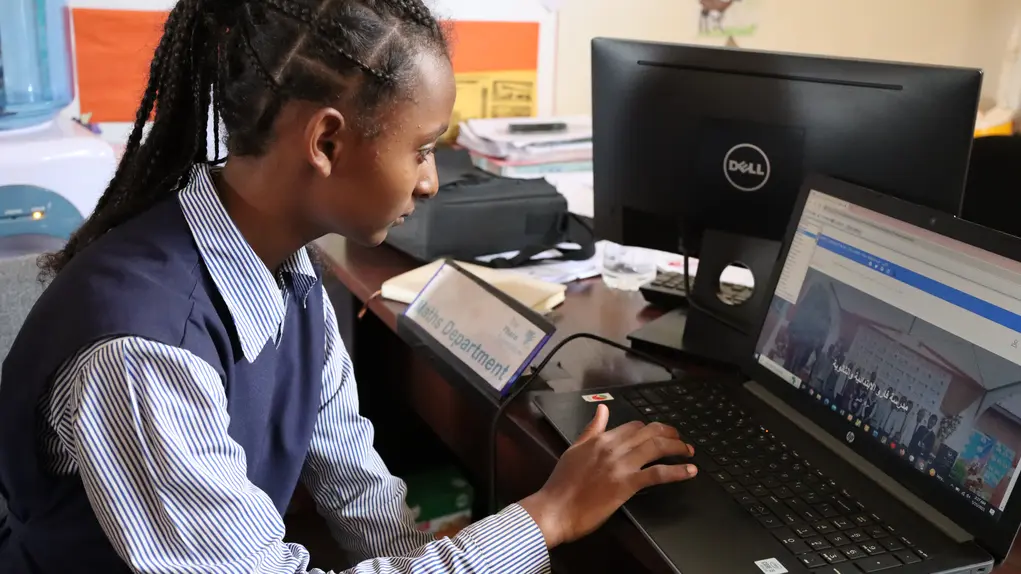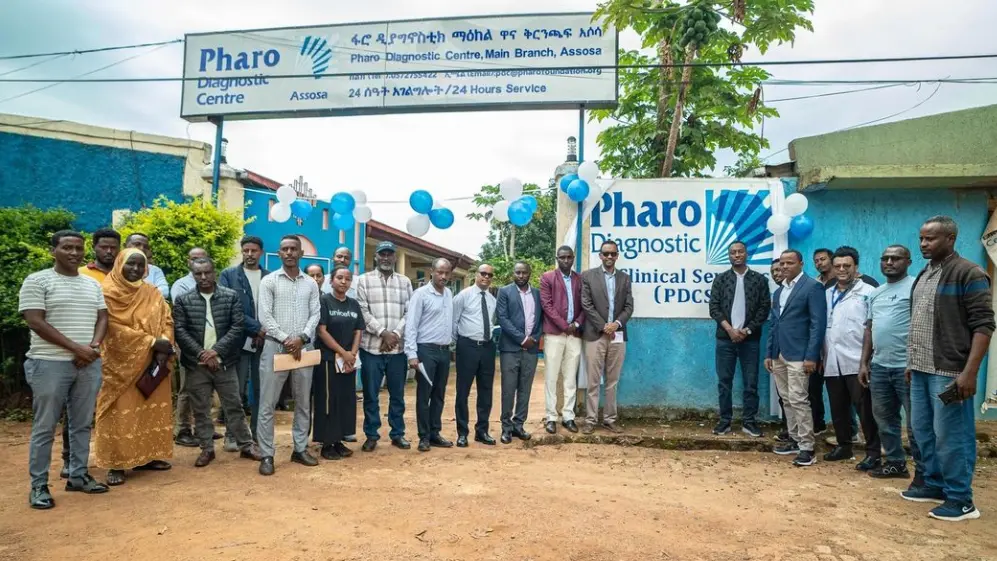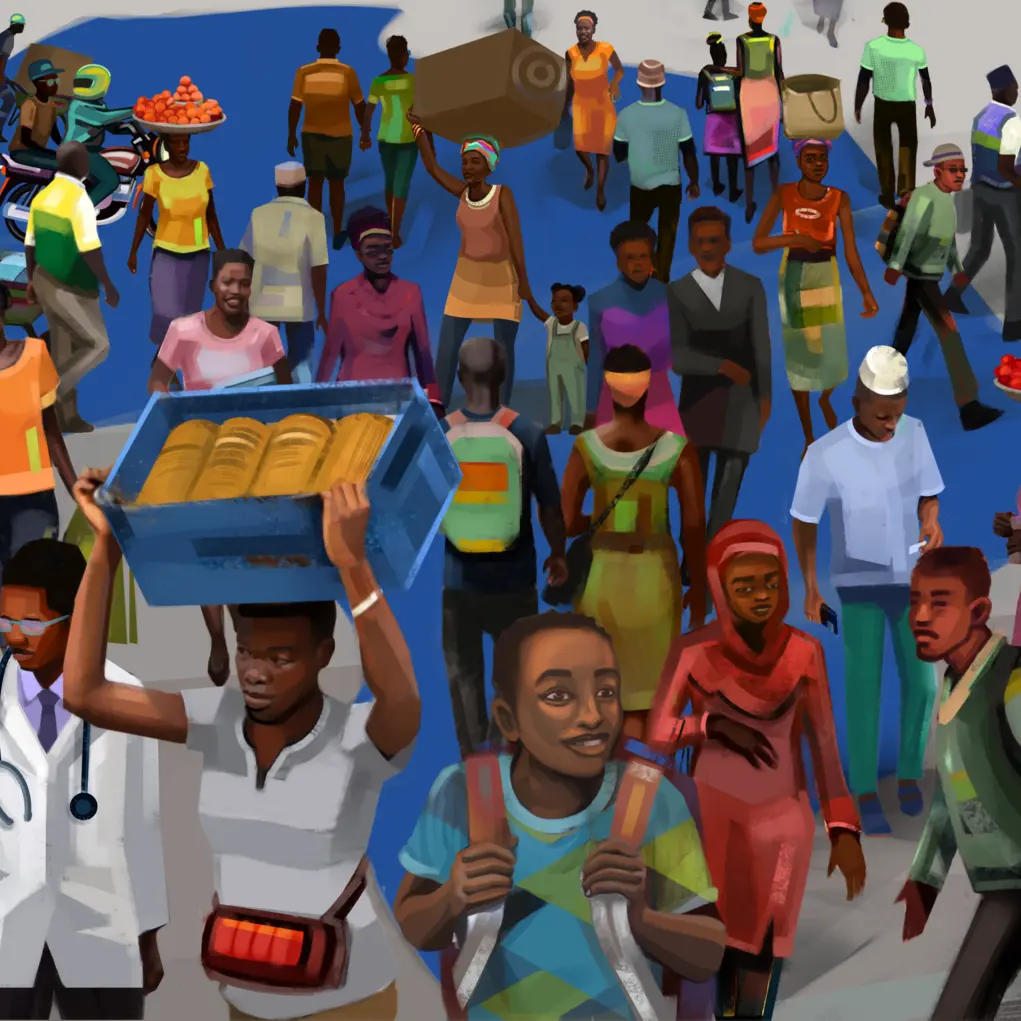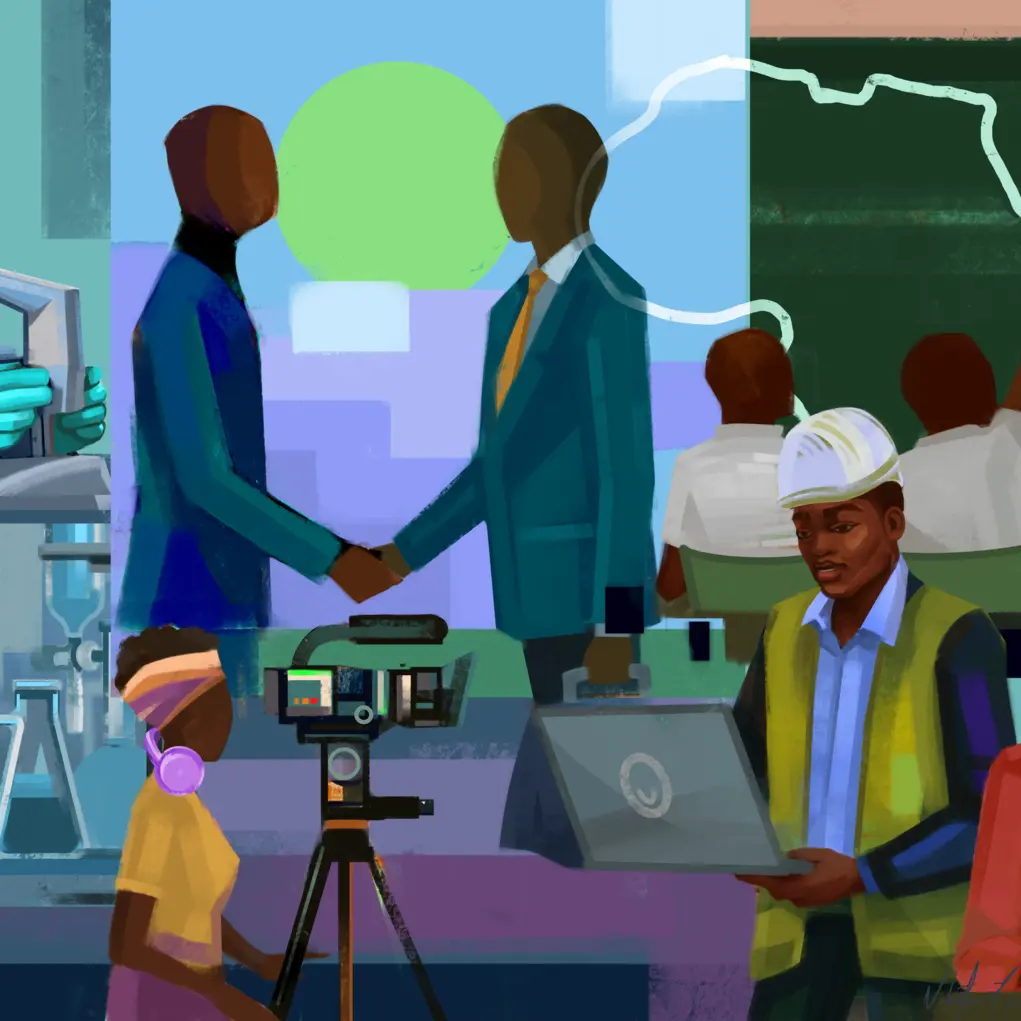Meet the founder
Pharo Foundation’s history involves three phases:
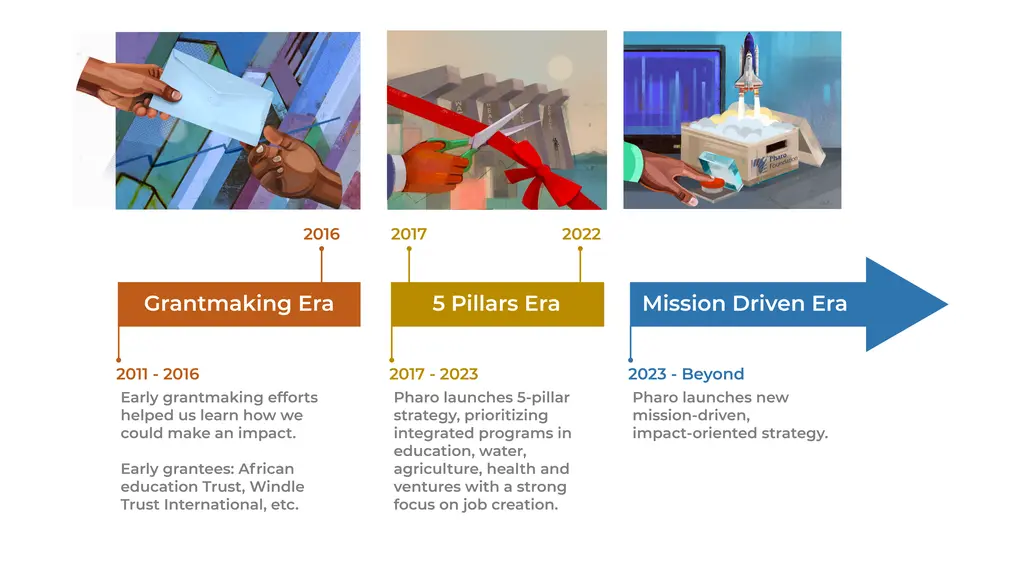
Scroll to learn about the history of our organisation.
The evolution of our foundation
2011-2016
Grant-making
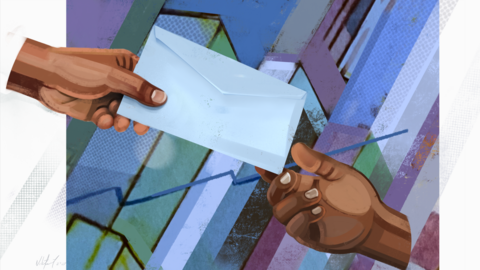
2011-2016
Grant-making
From 2011 to 2016, we started as a grant-making organisation, with projects chosen on the basis of the personal inclinations and passions of our founders. Early partnerships through grant-making helped us learn how to ‘do development’ through cooperation with grantees, who shared an in-depth knowledge of their field with us.
We partnered with Amref East Africa, Action Aid, African Education Trust, Somaliland Nursing and Midwifery Association, Windle Trust International, Medical Aid Films, Action Aid, and VSO, amongst many. Part of our current expertise relates back to the knowledge built through these early partnerships. In education, African Education Trust and Windle Trust partnerships were of particular significance. With African Education Trust, besides funding the education of girls in Somaliland, Puntland and Somalia, we were the first to lead and organise the automation of data on leaving certificate results at a national level in South Sudan. With Windle Trust International, we placed 50 African refugees over four rounds at UK universities with full scholarships for postgraduate study. In health, our partnership with Medical Aid Films also stands out. They made short films on key medical operations and procedures, which local doctors and midwives could download on their smartphones and which were dubbed in the local language, thereby providing state-of-the-art medical training to health practitioners without access.

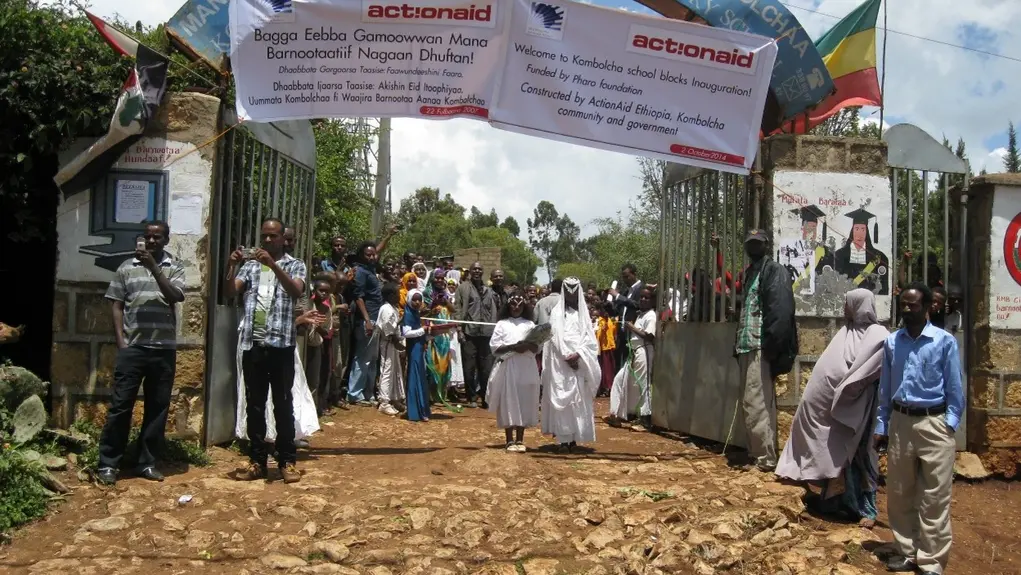
2016-2023
Our own project design and the emergence of the 5 pillar-strategy
2016-2023
Our own project design and the emergence of the 5 pillar-strategy
After 5 years of learning through grant-giving and some frustrations with our lack of control over implementation, in 2016 we decided to design and implement our own projects in order to control the agenda, and improve efficiency/accountability. Learning-by-doing and depth of intervention became two key characteristics of our approach through this phase of our growth.
We started out in education, based on its virtues as an asset that can never be taken away from an individual and whose returns are life-long. Location-wise, we started looking for the most rural and poor locations, lacking in access to quality education, and settled for Benishangul-Gumuz and the Somali Regional State in the West of Ethiopia. Following these choices, we started to build on the dream of our first state-of-the-art boarding school in Homosha, Benishangul. We also decided to operate through two channels: 1)our own Pharo Kindergartens and Schools; 2)public private partnerships with government ministries to improve the provision of public services in public schools.
Our involvement in the Somaliland education sector illustrates our learning-by-doing approach. We realised that public schools did not provide Kindergartens and as early as 2015, we started an Early Childhood Education (ECE) programme in seven pilot public schools in Hargeisa. We first ran our ECE programmes ourselves and from 2017, we became instrumental in the creation of a national ECE curriculum in conjunction with the Ministry of Education. When we realised that the children leaving our ECEs lost their advantage when they started at public primary schools, we decided to open our own primary schools and soon our own secondary schools. Finally, when we realised that the children going to our schools reached a point of decreasing returns to education due to the lack of education of their mothers, we started an adult literacy programme and a vocational training centre. This same learning-by-doing logic has applied across all pillars.
Around 2017, we started thinking about having 4 pillars of operation, namely education, health, water and agriculture, with projects largely chosen on the basis of their social return on investment. That vision solidified in 2018, though the health pillar only emerged in 2019-20 with an initial focus on increasing access to public intensive care services. In Ethiopia, we designed a four-year Socio-Economic Empowerment Programme (SEEP) around our four pillars, which emphasised depth of impact over breadth. Some of its major outputs are the Pharo Diagnostic Centre, the Agricultural Training Centre, the vocational training centre, two Pharo ECE Centres in Assosa, the Pharo Assosa primary school, the upgrading of 11 public schools and expansion of Assosa’s Water Supply.
By the time COVID hit, we had accumulated substantial fixed assets in our four pillars. In 2019, we created the fifth pillar of Pharo Ventures to embody our concern with sustainability through the transformation of the local private sector. This allowed us to clarify our mission as investing in Africa’s human and physical capital, with a strong focus on job creation. We had set the values of respect, creativity, entrepreneurship, trust and accountability. These values still guide our development ecosystems, which are deeply rooted in the community.
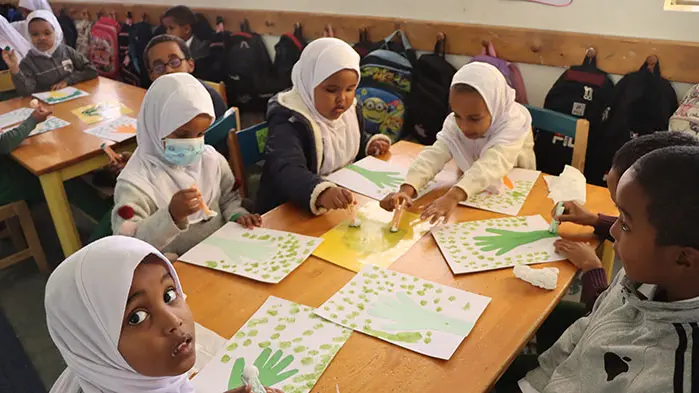
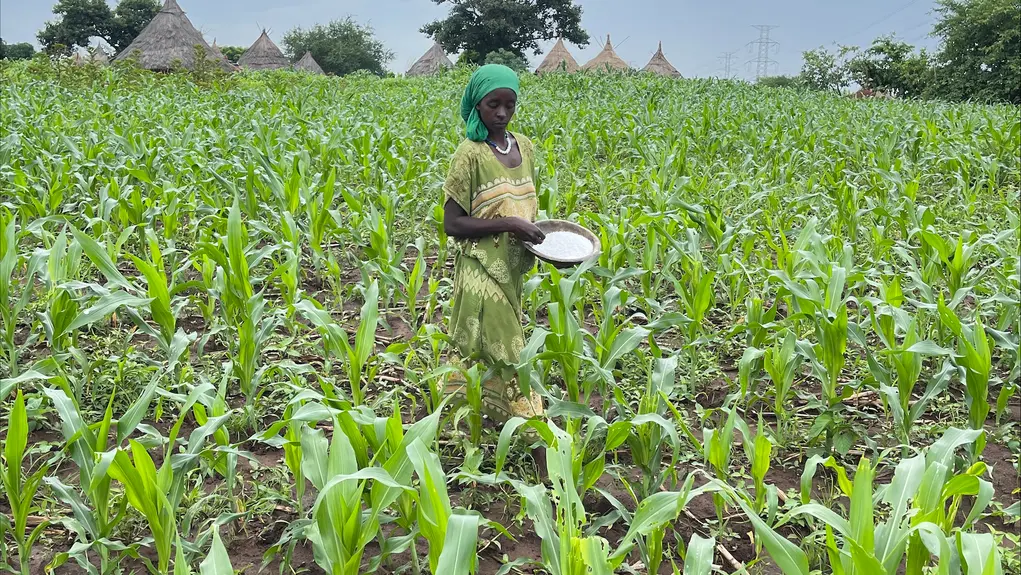

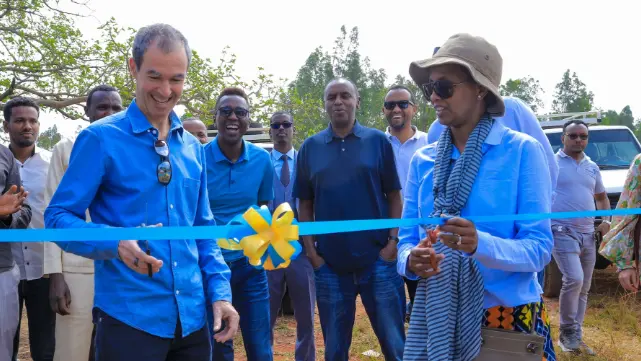
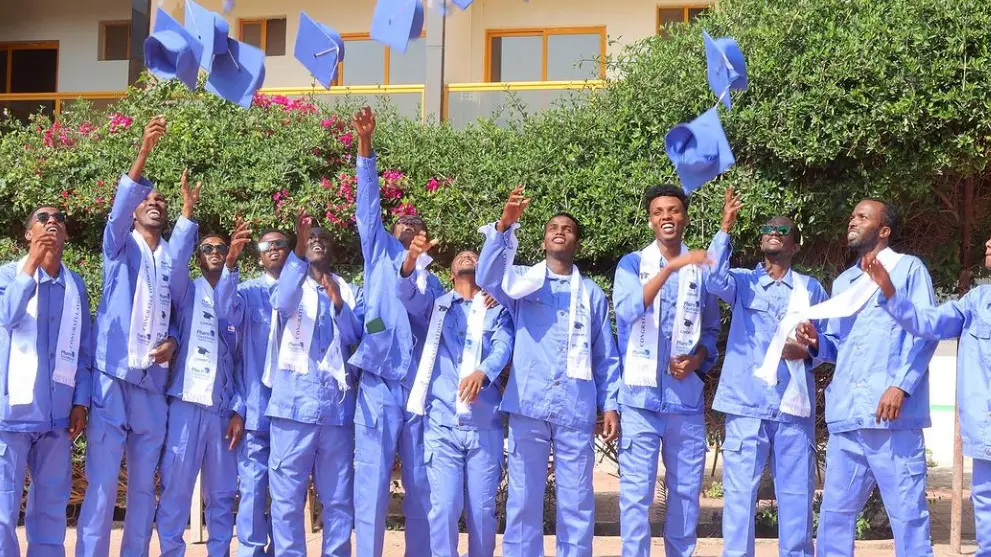
2023-Beyond
Mission-led and impact-driven development
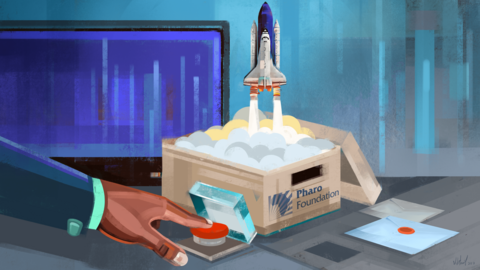
2023-Beyond
Mission-led and impact
driven development
Until now, we have not been driven by how well we perform relative to the outside world, nor have we been particularly focused on the evidence around what works in development. We have also been too busy setting up our operating structure to think about our legacy. But ten years on, we are in a position to use our accumulated fixed assets as part of a solution to greater development challenges, and to revisit our priorities on the basis of mission-driven and impact-oriented development.
All of our activities will work towards the fulfilment of three missions, which form the core of our medium-term strategy. The missions are our creative response to some of the hardest development challenges and they rely on the core competencies which we have developed overtime.
Today, we take stock of our sprawling array of projects to ensure that our new directions for growth are less organic, more impact- and research-driven. Our innovative M&E team is critical in this respect, as its evaluation of our results measures the effectiveness of our project implementation, but also feeds back into our project design and the research community’s knowledge pool.
Finally, after a decade of experience, we have something to give back to the outside world and are ready to diffuse our knowledge. Just as we drew knowledge from our grantees and partners in our first phase of development, we are now ready to plug back our accumulated know-how into the development and research worlds.
